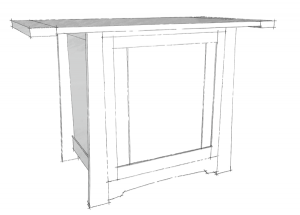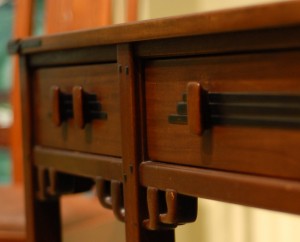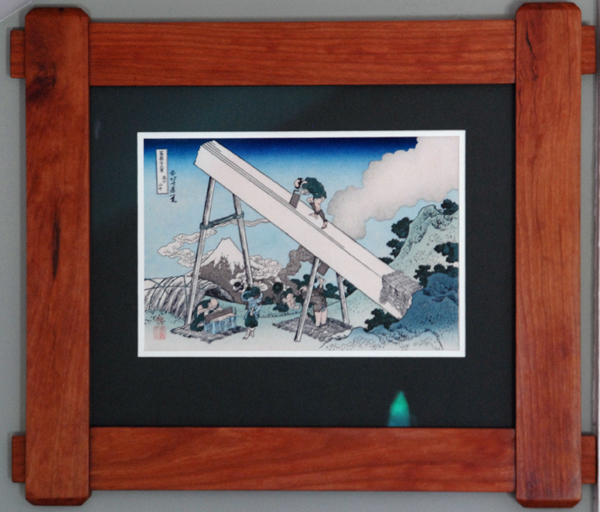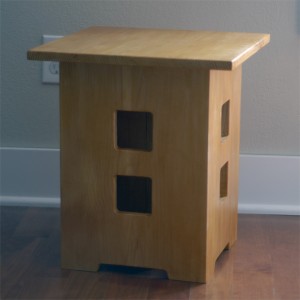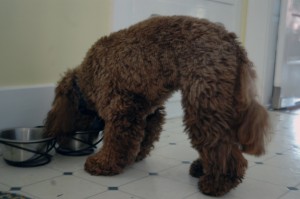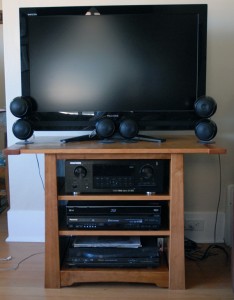
The reverse tapered legs, overhanging top, and stepped arch on the bottom rail place this TV stand in the West Coast Arts and Crafts style.
The stand is essentially a case bookended by two face frames, with the frames’ stiles extending below the bottom rail to form legs. I began by cutting the side top and bottom rails to size and using a slot cutter to rout a 1/2″ deep x 1/4″ wide groove in one edge of each rail. I then cut side panels from some 1/2″-inch plywood and routed a rabbet along the short edges of the panel. I like to pre-finish my projects when I can, and I took that approach here. After sanding through 250 grit, I wiped a coat of boiled linseed oil onto the side components and followed with a couple of coats of blonde shellac, then wet sand to 400 grit. With the finish in place, I glued the tongues on the plywood panels to rabbets on the rails. To finish the box, I cut the bottom and top panels from 1/2″ plywood, finished them, then attached them to the side using loose tenons.


